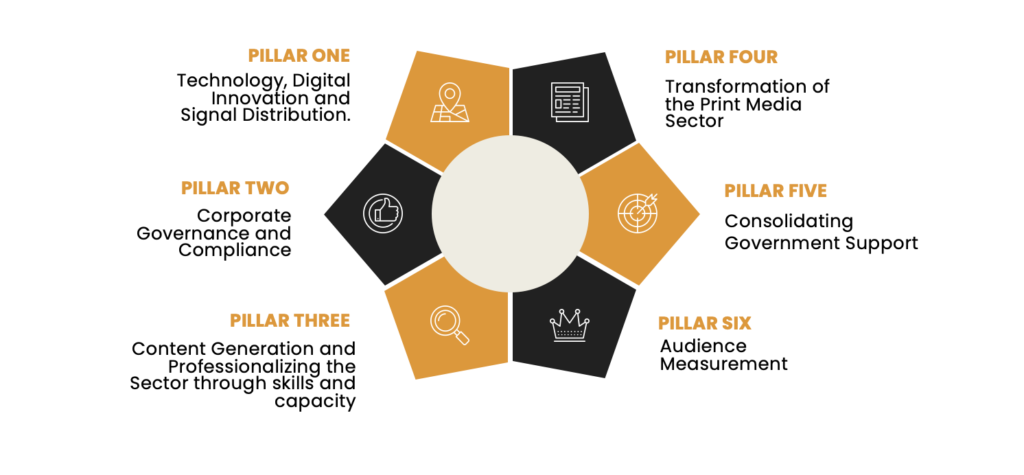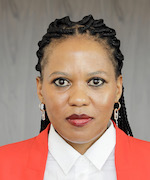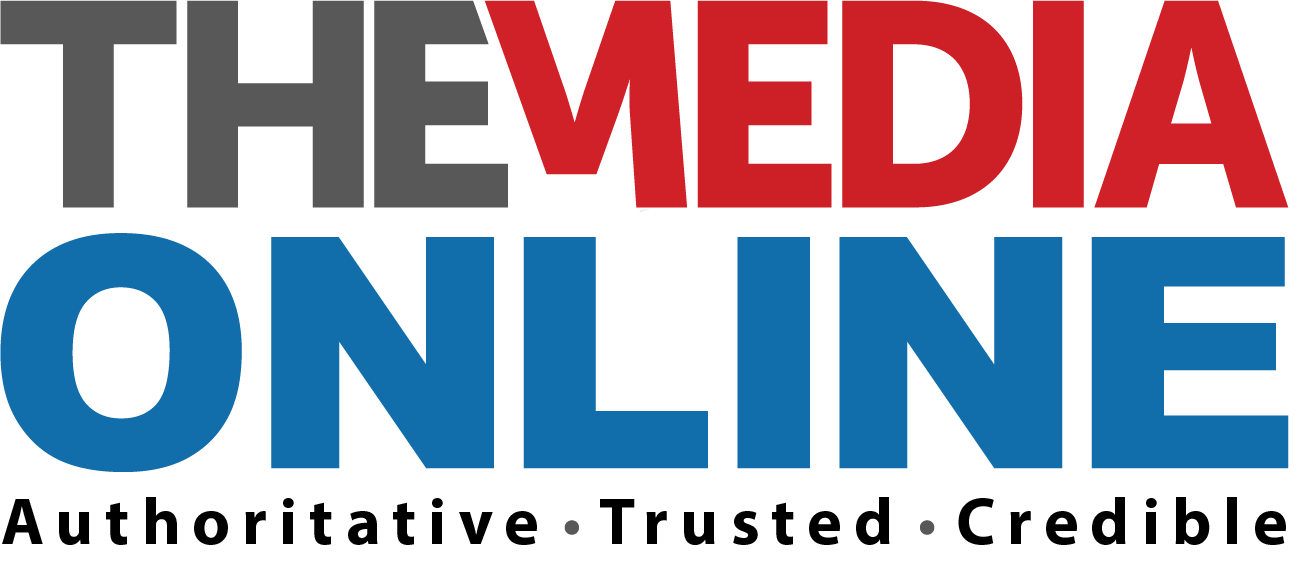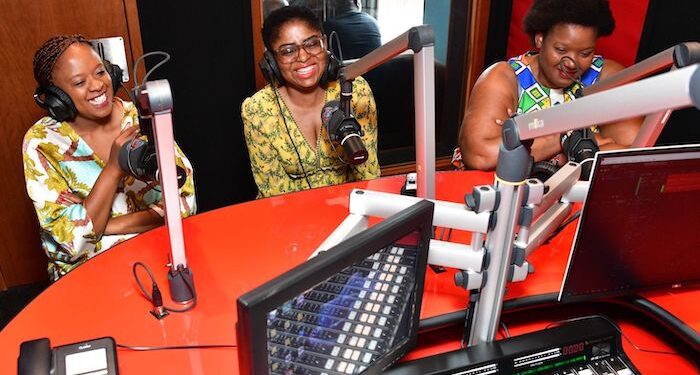Building a sustainable community and small commercial media sector in South Africa is essential, writes Shoeshoe Qhu. The Media Development and Diversity Agency has identified six pillars to address the sector’s most pressing challenges.
Community media, whether via radio, television, or local publications, play a vital role in South Africa’s democracy, bringing to life the constitutional guarantees of access to information, freedom of expression and a right to freedom of conscience, religion, thought, belief and opinion.
These platforms serve as a lifeline for many communities, especially where mainstream media doesn’t reach. There are over 200 licensed community broadcasters in the country and about 300 independent and local publishers, each reaching millions of people each week.
This year (from February 1995) marks 30 years since the licensing of the first community radio station in South Africa, paving the way for the development of the country’s third tier of broadcasting, alongside public and commercial.
For years, community media organisations have operated independently, relying on donor funding, grants, and advertising revenue.
Changing times
Times have changed.
Digital technologies, may present opportunities for community media, but have also led to disintermediation of information and a shift in advertising budgets to online platforms and, most recently, podcasts – which have disrupted traditional revenue models for the sector.
This shift, coupled with a sluggish economy – we know marketing budgets are often first to be cut – has community broadcasters and publishers struggling to stay afloat.
In October 2024, the Media Development and Diversity Agency (MDDA) released a study: The Research and Development of a Sustainability Model for Community and Small Commercial Media.
The findings are alarming: only 7% of community media organisations consider themselves fully sustainable, while 74% are just getting by, and 19% are not sustainable at all. Community television is in the most precarious position. The key obstacles? A lack of funding, limited revenue streams, high staff turnover, and governance challenges.
Shared shoestring challenges
Because these organisations serve communities with limited financial resources, they struggle to generate local revenue. Support from local and provincial governments is also inconsistent, leaving many media outlets without a financial safety net.
For years, the sector has been advocating for government to allocate a dedicated share of its advertising spend towards community media. This would significantly boost the sector’s revenue and financial stability and would be a significant achievement of the 7th Administration towards achieving a sustainable community media.
Revenue generation is another major challenge. Many of these organisations operate on a shoestring budget, barely managing to cover their monthly expenses.
For broadcasters, the burden includes signal distribution costs, employee salaries, rent, and utilities. Publishers, on the other hand, grapple with the high costs of printing, distribution, staff wages, and office space.
While these financial pressures vary from one organisation to another, the constant struggle to stay afloat remains a shared challenge across the sector.
They struggle to attract advertisers due to a lack of marketing expertise and data to prove their audience reach. This financial instability makes it difficult to hire and retain skilled staff, in turn leading to high turnover rates and a perception of unreliability, further discouraging advertisers from investing.
Audience measurement
Audience measurement remains a significant challenge for community media. Unlike large commercial outlets, these organisations often lack the resources for audience research, making it difficult to demonstrate their reach and frequency to attract advertisers.
In response, the MDDA is working to secure additional funding for audience measurement. This initiative aims to strengthen the sector’s bargaining power in media buying, support data-driven programming decisions, and provide tangible proof of return on investment.
Enhanced audience insights will also bolster the MDDA’s advocacy for directing more resources to community and small commercial media.
Additionally, community radio stations must conduct qualitative research to gain deeper audience insights, ensuring they produce content that resonates with their listeners and meets community needs.
The talent toolkit
Another key challenge facing the sector is the struggle to attract and retain skilled professionals, as many community media organisations simply can’t afford competitive salaries. They rely heavily on volunteers who work for stipends or see the role as a stepping stone to better-paying jobs in the mainstream media or elsewhere.
While this creates a great pipeline for talent in the broader media industry, it leaves community outlets in a constant cycle of training and losing their best staff, making professionalisation very difficult.
While the sector has nurtured some of the industry’s greatest talents, it must also focus on retaining its own by offering competitive salaries and better working conditions. Sustainability and profitability are key to achieving this.
Other gaps in critical skills, particularly in sales and marketing, financial management, and governance, continue to hinder growth. Addressing these shortcomings through training and capacity building will be essential in securing the sector’s long-term success.
Many community media organisations suffer from poorly structured boards, frequent conflicts between management and decision-makers, and at times political interference. Too often, board members are appointed based on popularity rather than experience, leading to mismanagement and a lack of strategic direction.
To address this, the MDDA is developing a toolkit which will cover governance designed specifically for community media, to help build more stable and accountable leadership structures. This is in addition to the governance workshops and interventions that the agency conducts.
Despite these challenges and many not discussed here, millions of South Africans still rely on community media for news and information, and the sector delivers on what could be termed as an unfunded mandate.
An audience of millions
According to the Broadcast Research Council (BRC), community radio reaches about four million listeners weekly, while grassroots publishers collectively serve an audience of over five million readers, as estimated by the Audit Bureau of Circulations (ABC).
The organisation broadcast content in indigenous languages and historically diminished cultural group. Radio Riverside in the Northern Cape, for instance, has worked with the last speaker of the N|uu, Ouma Katrina Esau, to develop an audio dictionary. The sector simply cannot fail.
Some community media outlets have diversified their income streams by running branded funeral policies, offering media training, renting out recording studios for music and podcast production, setting up digital out of home billboards, and even introducing membership fees. Strategic partnerships and digital innovation have also played a crucial role in keeping them afloat.
There is a lot of work, collaboration and support needed for community and small commercial media to be sustainable. To strengthen the sustainability of community and small commercial media (CSCM), the MDDA has identified six key pillars that address the sector’s most pressing challenges.
By aligning these pillars with UNESCO’s Viability Indicators, the MDDA has created a framework to assess impact, identify barriers, and implement targeted solutions that will help drive long-term resilience and growth.

Building resilient and future-forward community media
While the MDDA plays a crucial role in supporting the sector to ensure that there is media development and diversity, real change requires a collective effort from government, the private sector, and civil society. The sector also needs to catch-up to technology and embrace digitalisation, strengthen governance, and foster new revenue models.
By ensuring the sustainability of community media, we would be safeguarding the very essence of South Africa’s diverse and democratic media landscape, in ownership and control, as well as plurality.
 Shoeshoe Qhu is the CEO of the Media Development and Diversity Agency, a statutory development agency for promoting and ensuring media development and diversity. It is a partnership between the South African Government and major print and broadcasting companies to assist in, among others, developing community and small commercial media in South Africa. The MDDA was established in 2003 in terms of the MDDA Act No. 14 of 2002.
Shoeshoe Qhu is the CEO of the Media Development and Diversity Agency, a statutory development agency for promoting and ensuring media development and diversity. It is a partnership between the South African Government and major print and broadcasting companies to assist in, among others, developing community and small commercial media in South Africa. The MDDA was established in 2003 in terms of the MDDA Act No. 14 of 2002.














